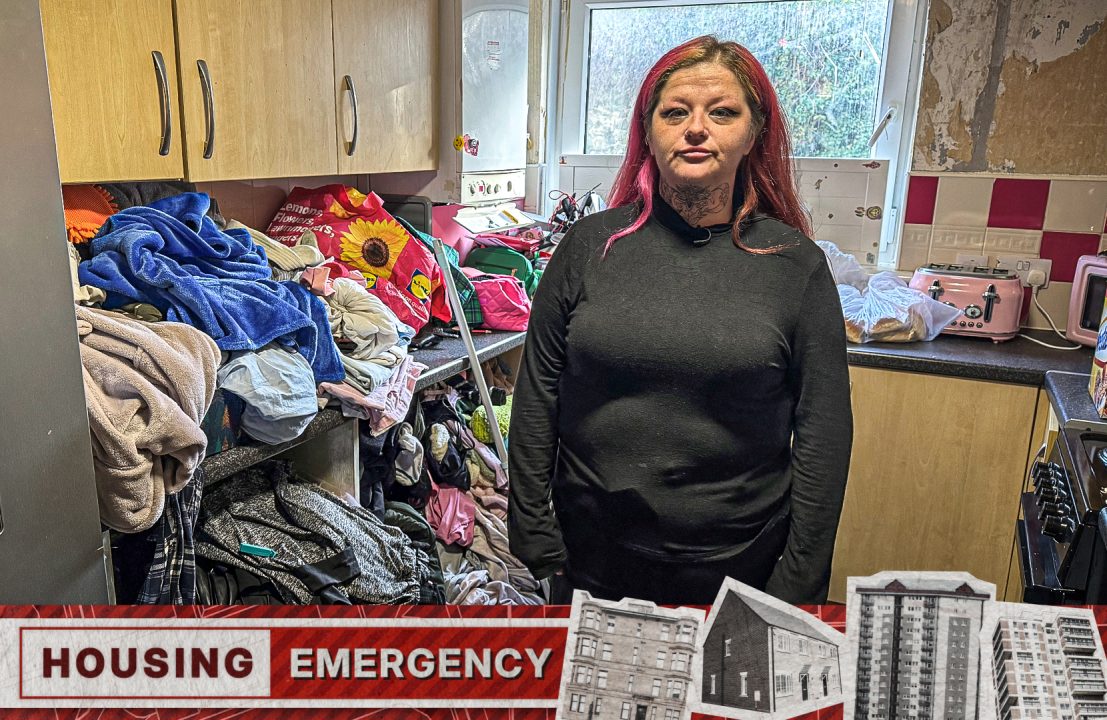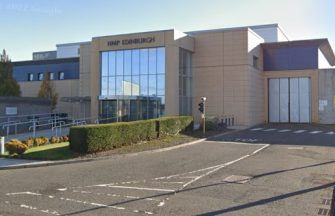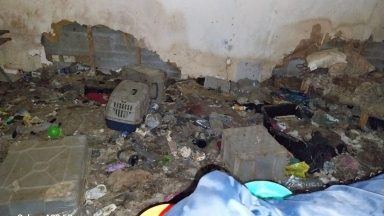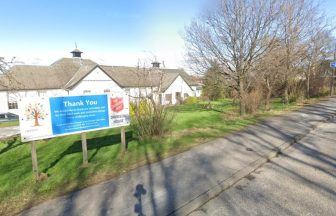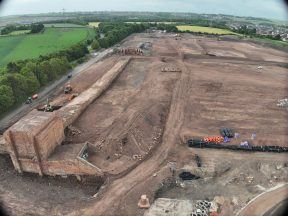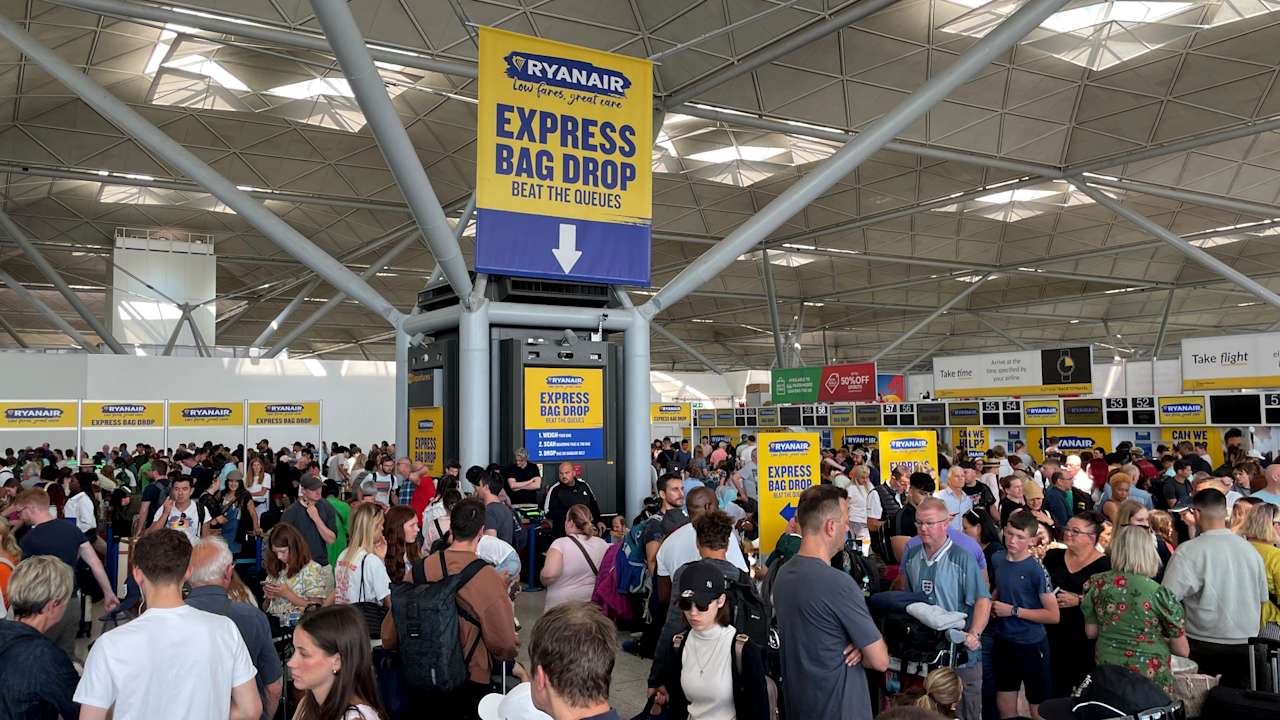Lauren Boggie’s council house in Edinburgh is full of mould and worsening dampness.
She tries hard to make it a comfortable home for her family but it’s riddled with problems.
She’s storing her clothes in the kitchen as her bedroom wardrobes are too wet and mouldy.
Furthermore, she fears the property isn’t stable as the interior walls shake and rattle. Boards cover the windows, which don’t fully close.
She told STV News, “It’s like living in a prison. I don’t think any human should live like this. The mould can only get mouldier. The damp can only get damper. I feel like I’m living in a bath. It feels wet. It feels damp.
“It’s soul destroying. It feels unhealthy. I just want a nice warm, comfy house. Just walls that are standing and no mould. I’ve seen worse mould, but this mould has gotten worse.”
And Lauren’s not alone. Around 85,000 households in Scotland are living within a property considered to be in poor condition, according to Homes for Scotland.
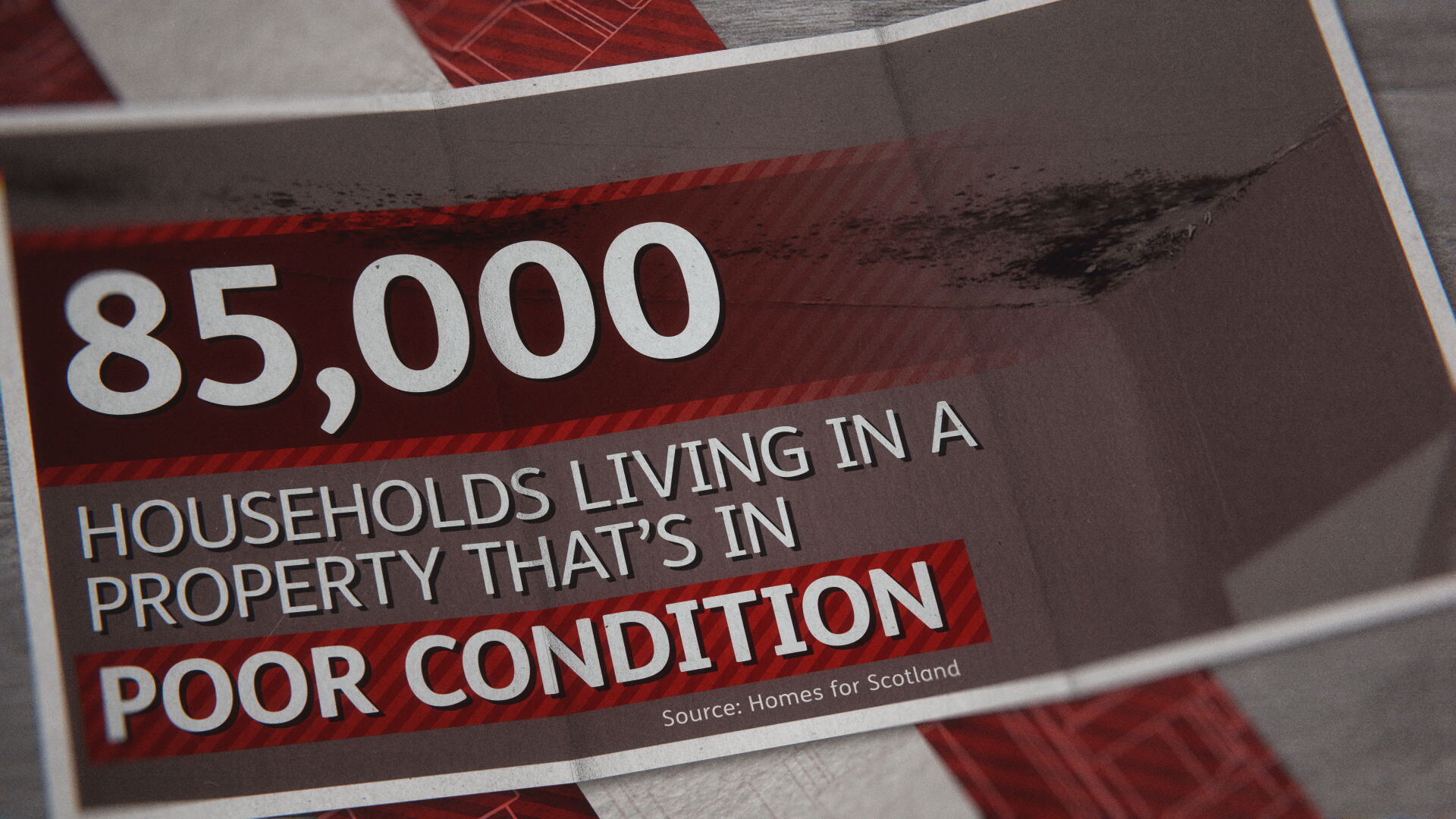 STV News
STV NewsScott Lumsden from the tenants’ union Living Rent said: “People are being left in these houses, flats, tenements that just aren’t up to scratch.
“They are being left in states of disrepair. We know in the private sector that 50% of people are in housing that is not suitable, that need critical repairs done. We know in social housing there’s a similar number of people waiting for repairs to be done.”
Regarding Lauren’s circumstances, officials at the City of Edinburgh Council said they would arrange a site visit to identify work that needs carried out.
Cammy Day, leader of City of Edinburgh Council, said: “I sympathise with the tenants and I’m so sorry to hear that their current circumstances are causing them a lot of worry. We want our tenants and residents to live in safe homes where their health is a priority.”
“We have no record of any complaints received from Ms Boggie and there are no outstanding repairs logged.
“However, we’ll arrange a site visit to identify any outstanding works that need to be carried out. Our housing colleagues will be in touch with the family to offer a full review of their housing options.”
Could technology be the answer?
Those in the housing sector are now looking to technology to help improve Scotland’s housing stock.
One tenement in Glasgow, owned by West of Scotland Housing Association, is the first of its kind in the UK to be fitted with electric wallpaper.
It heats the structure of the building, rather than air in the room. Experts believe that is the perfect solution for hard-to-treat properties across the country.

Lesley McCourt from Sureserve Assest Services told STV News: “Whilst it does take a longer period than gas to get to the temperature you want to achieve, it also retains heat for three times as long as a gas heating system.
“The reason that the temperature drops off with a gas heating system so quickly after you switch the heating off is because the air has left the building – that doesn’t happen with infrared, so you don’t have to use the heating for as long as you would with a gas heating system.”
The company uses the available information about the property to build a 3D digital twin. Alongside thermal imaging systems, experts believe it could help landlords monitor issues with damp or mould before it becomes a problem.
All of this improvement comes at a cost and some landlords may pass that on to tenants in the form of rent increases.

But West of Scotland Housing Association believe it’s a cost they should cover.
Andrew Kubski, the association’s director of development and asset management, said: “We’ve seen enough from our one pilot to suggest that this might have some mileage, so we want to scale it up.
“The important thing for us is getting some feedback from the householders on how it works. As long as we’re comfortable that they know how to get the best out of it and it’s given us that reduction in energy usage.
“We’re seeing that reflected in the demand in the property and the tenants have seen the lower fuel bills, so I would like to think we would roll it out much wider.
The Scottish Government has ambitious net zero targets they want to hit by 2045, but achieving that means the existing housing stock needs to be more energy efficient.
So far they’re not going to hit that target.
Follow STV News on WhatsApp
Scan the QR code on your mobile device for all the latest news from around the country


